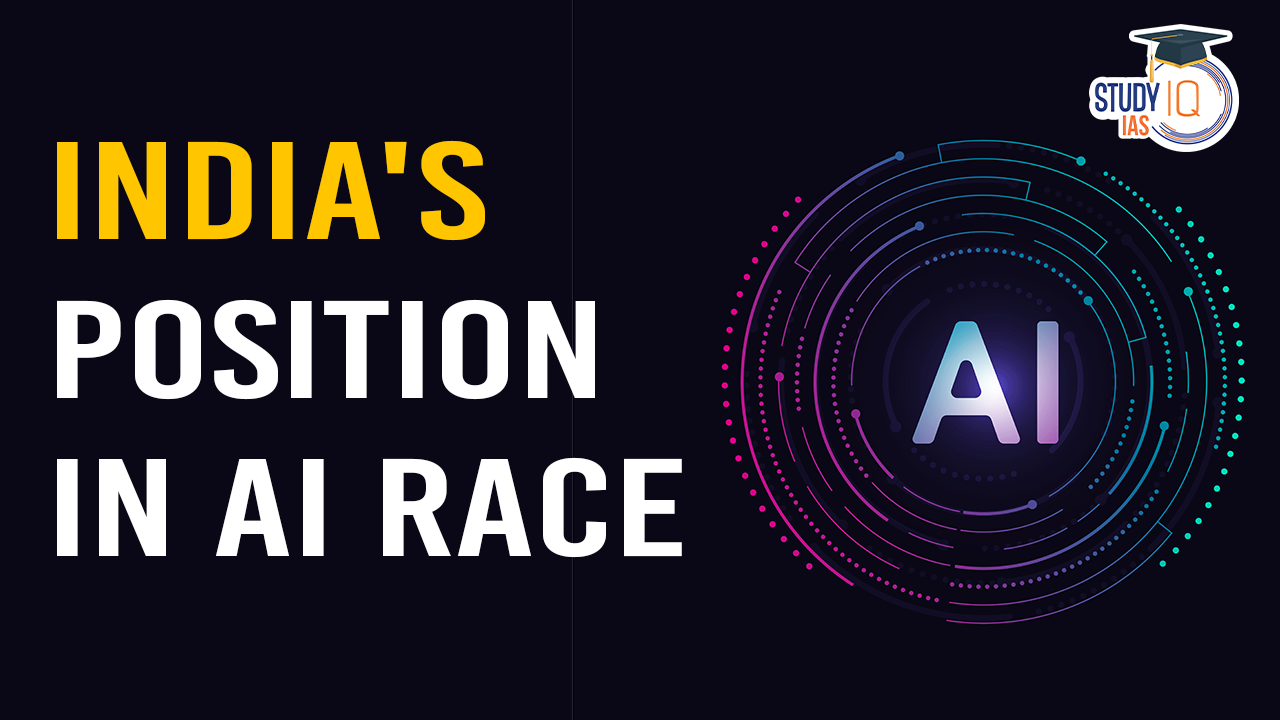Table of Contents
Context: The emergence of DeepSeek as a cost-effective, high-performing open-source AI model has significant implications for India’s AI ecosystem, spanning AI application development, research, infrastructure, and policy.
Global Implications of DeepSeek
Disrupting US AI Dominance
- DeepSeek R1 challenges the US-led AI ecosystem, which relies on expensive data centers and high-end semiconductor chips.
- It demonstrates that high-performance AI models can be built with lower infrastructure costs, threatening the business models of US AI giants like OpenAI, Google, and Anthropic.
Intensifying US-China AI Rivalry
- AI is now a geopolitical battleground, and DeepSeek is China’s response to the US’s lead in AI research.
- China aims to achieve self-reliance in AI and semiconductors, reducing dependence on Western technology.
- The US may impose stricter sanctions on AI chips and AI model exports to China, further intensifying the tech cold war.
Impact on Global AI Accessibility
- Democratization of AI: DeepSeek’s open-source approach makes powerful AI more accessible to startups, researchers, and smaller nations.
- New AI Hubs: Countries that lack AI infrastructure can use and adapt DeepSeek models instead of relying on costly, closed-source models from the US.
- AI Technological Colonialism Risk: If AI development remains concentrated in a few nations (US and China), smaller nations could become dependent on foreign AI infrastructure.
AI Cost Reduction and Efficiency Gains
- DeepSeek’s success shows that innovative AI techniques (e.g., reinforcement learning, mixture-of-experts) can cut costs and boost efficiency.
- This could lower the barriers for other countries to develop their own AI models.
Challenges in India’s AI Development
- Dependence on Foreign AI Models: India lacks homegrown foundational AI models and relies heavily on foreign LLMs (like OpenAI’s GPT and Google’s Gemini).
- This limits customization for Indian languages and applications and raises data privacy concerns.
- Limited AI Infrastructure (GPUs & Data Centers): India’s AI ecosystem lacks high-performance computing resources like GPUs and TPUs.
- The plan to acquire 10,000 GPUs has been slow-moving, delaying AI research and development.
- Insufficient AI Research & Funding: India has strong AI talent but low investment in fundamental AI research.
- Most AI research is focused on applications, not core AI development (LLMs, reinforcement learning, etc.).
- Language and Data Challenges: AI models must cater to 22 official Indian languages and hundreds of dialects.
- There is limited high-quality training data in regional languages, affecting LLM accuracy and usability.
- AI Policy and Ethical Concerns” India lacks clear regulations for AI safety, bias mitigation, and data protection.
- The absence of AI governance frameworks could slow adoption and raise legal risks for businesses.
Solutions for India’s AI Growth
- Develop Indigenous AI Models: India should fund and accelerate the development of Indian LLMs, much like China did with DeepSeek.
- Government, private companies, and academia must collaborate on mission-mode AI projects.
- Invest in AI Infrastructure: Expand high-performance computing clusters and cloud AI infrastructure through the IndiaAI Mission.
- Encourage public-private partnerships for building data centres and acquiring advanced GPUs.
- Increase AI Research & Development Funding: Set up dedicated AI research institutes focusing on LLMs, reinforcement learning, and multi-modal AI.
- Provide grants and incentives for AI startups working on foundational models.
- Build AI Models for Indian Languages: Create high-quality datasets in regional languages for training Indian-specific LLMs.
- Use DeepSeek or Meta’s Llama to fine-tune models for local applications.
- Strengthen AI Policy & Regulation: Establish an AI regulatory framework ensuring ethical AI use, privacy protection, and bias reduction.
- Promote open-source AI adoption to avoid dependence on foreign models.
- Foster AI Innovation and Entrepreneurship: Organize AI hackathons, incubators, and startup accelerators to nurture AI talent.
- Encourage industry-academia collaboration for AI research and commercialization.
Conclusion: India Must Act Now
- DeepSeek proves that cost-effective AI models can challenge the dominance of US AI giants.
- India has the talent and potential but lacks foundational AI models and high-performance computing infrastructure.
- Urgent investment in AI R&D, infrastructure, and policy reforms is required for India to become a global AI leader.


 RNA-Based Antiviral for Deadly Agricultu...
RNA-Based Antiviral for Deadly Agricultu...
 Comprehensive Remote Sensing Observation...
Comprehensive Remote Sensing Observation...
 Perovskite Solar Cells, Objective and Ch...
Perovskite Solar Cells, Objective and Ch...





















